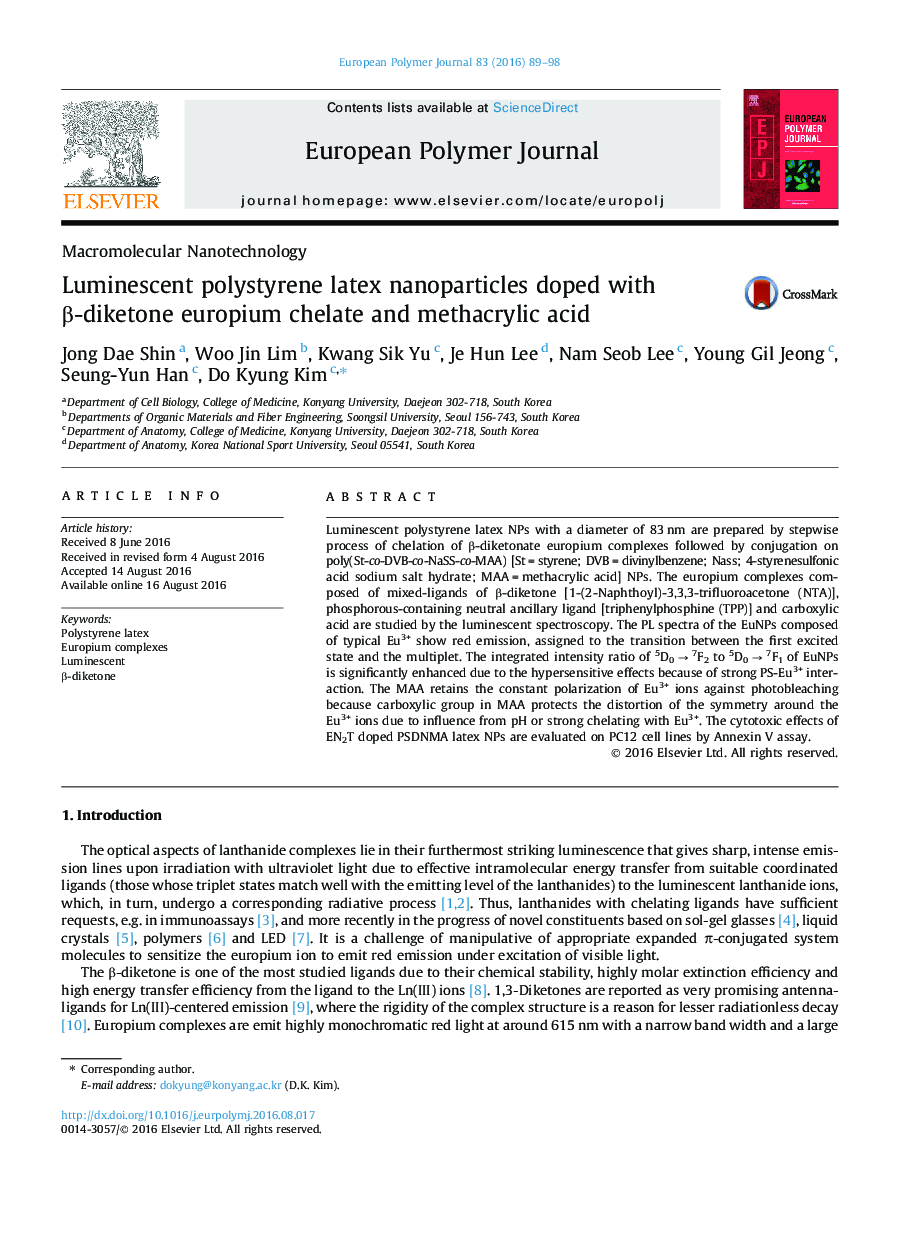| Article ID | Journal | Published Year | Pages | File Type |
|---|---|---|---|---|
| 1401191 | European Polymer Journal | 2016 | 10 Pages |
•Europium based luminescent latex nanoparticles was designed and developed.•Thermodynamic equilibrium calculations in Eu3+H+Cl− system are performed.•The MAA retains the constant polarization of Eu3+ ions against photobleaching.•As prepared latex nanoparticles in less than 10 μg/mL had no cytotoxicity on PC12 cells.
Luminescent polystyrene latex NPs with a diameter of 83 nm are prepared by stepwise process of chelation of β-diketonate europium complexes followed by conjugation on poly(St-co-DVB-co-NaSS-co-MAA) [St = styrene; DVB = divinylbenzene; Nass; 4-styrenesulfonic acid sodium salt hydrate; MAA = methacrylic acid] NPs. The europium complexes composed of mixed-ligands of β-diketone [1-(2-Naphthoyl)-3,3,3-trifluoroacetone (NTA)], phosphorous-containing neutral ancillary ligand [triphenylphosphine (TPP)] and carboxylic acid are studied by the luminescent spectroscopy. The PL spectra of the EuNPs composed of typical Eu3+ show red emission, assigned to the transition between the first excited state and the multiplet. The integrated intensity ratio of 5D0 → 7F2 to 5D0 → 7F1 of EuNPs is significantly enhanced due to the hypersensitive effects because of strong PS-Eu3+ interaction. The MAA retains the constant polarization of Eu3+ ions against photobleaching because carboxylic group in MAA protects the distortion of the symmetry around the Eu3+ ions due to influence from pH or strong chelating with Eu3+. The cytotoxic effects of EN2T doped PSDNMA latex NPs are evaluated on PC12 cell lines by Annexin V assay.
Graphical AbstractFigure optionsDownload full-size imageDownload as PowerPoint slide
